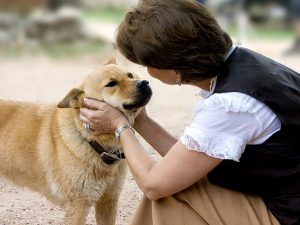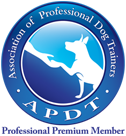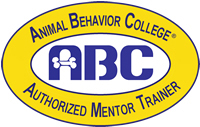I just read a blog on the use of language by Eileen & Dogs (here it is if you want to check it out – – good stuff). It got me thinking about the most common questions I get asked by clients about language.
“But you don’t say anything??”
“When are we going to be able to say the command?”
We people, we looooove talking. We love talking to our dogs. We tell them the good, the bad and ugly. We talk at them, to them and, sometimes, for them. So much talking. Despite knowing that dogs don’t know English, we continue to talk to them.
What dogs do know is body language. Years of human-canine relationships have honed the ability of a dog to interpret and respond to what our bodies are saying. In essence, when we interact with our dogs, we are double-talking. We are saying things with our mouths and also speaking to them with our bodies.
Can you imagine trying to listen to someone who was speaking to you in two different languages – simultaneously? It’s enough to make your head explode. Yet our dogs, such magnificent creatures, manage to do a pretty amazing job filtering through the cacophony.
Let me give you a few examples to illustrate what I’m talking about.
You’re at a business meeting. Your boss is sitting with his arms folded across his chest, scowling. He leans forward, a little too close for comfort, and mutters “great job today” while giving you a hard stare. His body language is telling you he’s angry even though his words are praising you. Would you believe him? How would you respond?
You meet your aunt for lunch. She looks you up and down, shakes her head and rolls her eyes. Taking a step back, she says, “You certainly are aging well!” Is she really giving you a compliment?
Here’s one more. Your partner gives you a warm, long hug. While holding you close, they say, “I was so mad at you earlier. Don’t ever worry me like that again”. Do you feel good or bad? Loved or shamed? Both?
Like dogs, we are trained from the get-go to pay attention to body language. Here’s a blog/video I just read on human body language if you’re interested. When people’s body and tone of voice or words don’t match up, there’s usually a problem. We might be confused or it might trigger us to evaluate the situation more closely rather than taking things at ‘face-value’.
I sound like a broken-record telling my clients that the best training relies on giving the dog clear information and predictable outcomes. Your body language and tone should line up, you should reduce useless babble (both with your body and words) and the formula of antecedent (cue) –> behavior –>consequence (reinforcer or punisher) should be rock solid as much as possible. The other day I was training my dog and my instructor pointed out that I was fidgeting with the treats in my hand, therefore making it a lot harder for my dog to know what to do. He was waiting for a signal, trying to watch my face and my hands and there I was making all this ‘noise’ with my fidgeting. I didn’t even realize it, it’s so easy to be oblivious to the bad habits we have with our dogs [they are so forgiving, after all].
Good dog owners listen to their dogs. They take the time to learn their dog’s language. When you do this, you’ll find that the connection, the bond and the harmony are exponentially better. Both your stress and the dog’s stress will be reduced because you’re on the same page.
Some examples of body language conversations with our dogs.
You lean over your dog, getting close to his face and enthusiastically tell him what a good boy he is.
Leaning over – threat, invading space – threat, enthusiastic tone – reward
Do you think your dog feels good in this moment?
You gently clasp your puppy’s muzzle and softly tell him that biting hurts and to be gentle.
Clasp – interaction/attention, soft tone – reward
Do you think he will stop mouthing you?
You are sitting on the couch, typing a blog on your computer and your border collie keeps nudging you for attention. You push him away, not saying anything (this example might be happening at this very moment).
Pushing away – interaction/attention
I can tell you with certainty that this border collie will not stop nudging for attention.
To conclude, I am going to emphasize three points.
- Your dog does not speak English. He can learn that certain sounds are linked with behaviors you want to see. Sit means put my butt on the floor. Shakehands means touch my paw to her hand…and so on.
- Your dog is always going to respond to your body first and your words second. So, pay attention to what your body is saying and learn how your dog interprets your body language.
- Your dog is talking to you constantly with his body. Learn his language and you will be amazed at how much better your relationship with your dog will be. They are absolutely poetic!
Interested in learning more about dog body language? Check out these great resources:




 Get our monthly newsletter packed full of helpful training tips!
Get our monthly newsletter packed full of helpful training tips! 






